Papers by Marcos Antonio Machado
Physiological and Molecular Plant Pathology, 2011

Ciência Rural, 2010
Os citros apresentam uma taxonomia muito complexa, principalmente com relação ao número de espéci... more Os citros apresentam uma taxonomia muito complexa, principalmente com relação ao número de espécies que constituem o gênero Citrus e os gêneros afins. Genótipos classificados como espécies podem ter sido originados por hibridação interespecífica e preservados por meio da embrionia nucelar. O presente trabalho teve como objetivo caracterizar uma população de tangerineiras híbridas oriundas do cruzamento das tangerineiras 'Clementina Fina' (Citrus clementina Hort. ex Tan.), genitor feminino, e 'Montenegrina' (Citrus deliciosa Ten.), genitor masculino, utilizando marcadores do tipo microssatélites (SSR). Com 12 pares de primers, foi possível diferenciar 93 acessos do estudo e agrupar a F1 em indivíduos mais próximos do genitor feminino e do genitor masculino. O PIC (Conteúdo de Informação de Polimorfismo) dos primers variou de 0,27 a 0,65. Toda a progênie do cruzamento entre 'Clementina Fina' e 'Montenegrina' analisada neste estudo é híbrida, e os SSRs f...
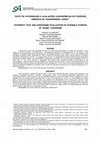
Scientia Agraria, 2009
A produção de citros está espalhada em todos os continentes agricultáveis e no Brasil ela represe... more A produção de citros está espalhada em todos os continentes agricultáveis e no Brasil ela representa o maior volume de frutas produzidas. O porta-enxerto é extremamente importante no estabelecimento de um pomar de boa qualidade. Na Estação Experimental Agronômica da Universidade Federal do Rio Grande do Sul, está localizada uma população de híbridos cítricos, implantada em 1990 e oriunda de polinização aberta, sendo o genitor feminino o tangeleiro ‘Lee’ [Citrus clementina Hort. ex Tan. x (C. tangerina Hort. ex Tan. x C. paradisi Macf.)]. Dentre os híbridos deste pomar foram selecionadas quatorze plantas com características morfológicas semelhantes as do porta-enxerto tangerineira ‘Sunki’ (C. sunki Hort. ex. Tan.). Para confirmar a paternidade dos híbridos foram utilizados marcadores moleculares do tipo microssatélites. A análise molecular permitiu identificar onze híbridos que não tiveram a ‘Sunki’ como parental masculino. Os demais híbridos, potenciais híbridos de tangerineira ‘Sun...
Nature Biotechnology, 2014
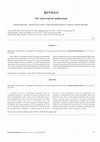
Summa Phytopathologica, 2006
Citrus leprosis is considered the main viral disease for the Brazilian citrus production, particu... more Citrus leprosis is considered the main viral disease for the Brazilian citrus production, particularly for the State of São Paulo, due to the high costs spent for the chemical control of its vector, the tenuipalpid mite Brevipalpus phoenicis. In addition, its global importance has significantly increased in the last years, with the dissemination of the virus to new countries in South and Central America. In Brazil, despite its economical importance and occurrence for more than seven decades, the most significant advances towards understanding the pathosystem interactions have been obtained only in the last ten years. This review focuses on various aspects of the disease, beginning with a historical view, its main characteristics, alternatives for its control, its increasing economical importance in Brazil and abroad, and the new data on the search for understanding the interactions amongst the mite vector, the virus, and the plant host.
Fitopatologia Brasileira, 2005
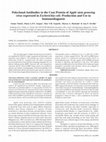
Fitopatologia Brasileira, 2004
The coat protein gene of Apple stem grooving virus (ASGV) was amplified by RT-PCR, cloned, sequen... more The coat protein gene of Apple stem grooving virus (ASGV) was amplified by RT-PCR, cloned, sequenced and subcloned in the expression vector pMal-c2. This plasmid was used to transform Escherichia coli BL21c+ competent cells. The ASGV coat protein (cp) was expressed as a fusion protein containing a fragment of E. coli maltose binding protein (MBP). Bacterial cells were disrupted by sonication and the ASGVcp/MBP fusion protein was purified by amylose resin affinity chromatography. Polyclonal antibodies from rabbits immunized with the fusion protein gave specific reactions to ASGV from infected apple (Malus domestica) cv. Fuji Irradiada and Chenopodium quinoa at dilutions of up to 1:1,000 and 1:2,000, respectively, in plate trapped ELISA. The ASGVcp/MBP fusion protein reacted to a commercial antiserum against ASGV in immunoblotting assay. The IgG against ASGVcp/MBP performed favorably in specificity and sensitivity to the virus. This method represents an additional tool for the efficie...
Plant Molecular Biology Reporter, 2010
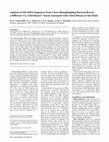
Plant Disease, 2005
Citrus huanglongbing (HLB, ex greening) is one of the most serious and destructive citrus disease... more Citrus huanglongbing (HLB, ex greening) is one of the most serious and destructive citrus diseases in the world. It is caused by a phloem-limited and nonculturable bacterium, “Candidatus Liberibacter”. The disease occurs in some Asian and African countries and recently has been reported in the state of São Paulo, Brazil. Analysis of the 16S ribosomal (r)DNA of the HLB bacteria from orchards in São Paulo revealed the presence of two distinct strains of “Ca. Liberibacter”. One of them, named LSg1 (Liberibacter sequence group 1), was 100% identical to strains from Japan (GenBank accessions AB038369 and AB008366), the Asian forms of the bacteria. The other, LSg2, is genetically distant from the Asian (96.1 to 96.3% identity) and African (95.8 to 96.1% identity) strains. Comparison of the 16S rDNA sequences from the LSg2 and the Asian strain revealed the presence of INDELs and point mutations. Specific primers designed for this Brazilian Liberibacter strain revealed that it is more widel...
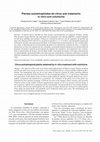
Pesquisa Agropecuária Brasileira, 2007
O objetivo deste trabalho foi obter plantas autotetraplóides de tangerina 'Ponkan', laran... more O objetivo deste trabalho foi obter plantas autotetraplóides de tangerina 'Ponkan', laranja 'Pêra-de-abril' e tangor 'Murcott', que serão usadas em cruzamentos com cultivares diplóides, visando à obtenção de indivíduos triplóides sem sementes. Utilizou-se o método de cultivo in vitro de segmentos de epicótilo em meio com colchicina (0,025, 0,05 e 0,1%), por diversos períodos (1, 2, 3, 7 e 14 dias), com subseqüente regeneração de brotações em meio sem a presença do alcalóide. As brotações foram microenxertadas in vitro e aclimatizadas em estufas. A determinação do nível de ploidia das plantas foi realizada por citometria de fluxo. A colchicina demonstrou ser tóxica aos explantes das três variedades, ocasionando redução significativa no número médio de brotações adventícias e aumento na porcentagem de explantes não-responsivos, em comparação com o controle. Entre as quatro plantas de laranja e uma de tangor obtidas, duas plantas de laranja e a de tangor, demons...
Journal of Microbiological Methods, 2008
Journal of Applied Genetics, 2007
Genetics and Molecular Biology, 2007
Genetics and Molecular Biology, 2004
Experimental and Applied Acarology, 2011
Biochemical and Biophysical Research Communications, 2004
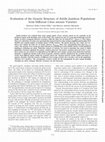
Applied and Environmental Microbiology, 2002
Xylella fastidiosa was isolated from sweet orange plants ( Citrus sinensis ) grown in two orchard... more Xylella fastidiosa was isolated from sweet orange plants ( Citrus sinensis ) grown in two orchards in the northwest region of the Brazilian state of São Paulo. One orchard was part of a germ plasm field plot used for studies of citrus variegated chlorosis resistance, while the other was an orchard of C. sinensis cv. Pêra clones. These two collections of strains were genotypically characterized by using random amplified polymorphic DNA (RAPD) and variable number of tandem repeat (VNTR) markers. The genetic diversity ( H T ) values of X. fastidiosa were similar for both sets of strains; however, H T RAPD values were substantially lower than H T VNTR values. The analysis of six strains per plant allowed us to identify up to three RAPD and five VNTR multilocus haplotypes colonizing one plant. Molecular analysis of variance was used to determine the extent to which population structure explained the genetic variation observed. The genetic variation observed in the X. fastidiosa strains...

ABSTRACT Genomes from Citrus clementina (clementine mandarin) and Citrus sinensis (sweet orange) ... more ABSTRACT Genomes from Citrus clementina (clementine mandarin) and Citrus sinensis (sweet orange) were recently made available for the community. In addition to that another sequence of the sweet orange genome, which was assembled in chromosomes, was released allowing a deeper evaluation of the genus. An important focus of our work is the biosynthesis of essential oil in citrus. We had already done analysis of yield and quality of essential oils extracted from the flavedo of citrus fruits in different developmental stages together with expression analysis of some terpene synthase genes, including two limonene synthases that showed different expression patterns. We then decided to carry a genomic analysis of these genes and used the genomes available. After rounds of blast analysis we came out with more than eighty putative terpene synthase gene sequences. These were filtered and got those encoding limonene synthases for a total of eight different complete coding sequences. We isolated the 2 Kb fragment upstream of them when we verified that two were not complete and therefore they were not used furthermore. Comparison of these upstream sequences reveals that they are not very similar and evaluation for presence of plant regulatory sequences with TSSP/Prediction of PLANT Promoters (Using RegSite Plant DB, Softberry Inc.) showed a different distribution of the regulatory elements in the sequences. This result could explain the different gene expression pattern verified before for two different limonene synthases. Financial support: FAPESP (08/57909-2), and CNPq (573848/08-4 and 475339/2011-8).
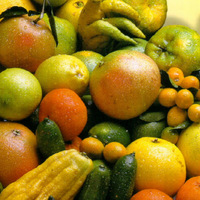









Uploads
Papers by Marcos Antonio Machado